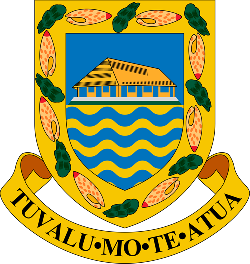Climate Hazard Assessment Report
TuvaluClimateHazards_Final_30May2024.pdf
(8.71 MB)
TuvaluClimateHazards_Final_30May2024.pdf (8.71 MB)
Tuvalu has nine islands: five coral atolls, three table reef islands, and one atoll/reef island. The
landmass of only 25.3 km2is spread over an Exclusive Economic Zone (EEZ) of 749,790 km2
. The population is about 11,500, of which 60 % live on the main (capital) island of Funafuti. The land mass
is entirely low lying with the latest reported, highest (natural) elevation level at 6.54 meters above
sea level. Communities are reliant on subsistence agriculture and fisheries which also underpin a
large part of the national economy.
The purpose of this report is to summarise the findings of the assessment of the key climate hazards
impacting Tuvalu over current and future (multi-decadal) climate change timescales, in particular as
relates to six priority sectors, viz: agriculture, fisheries, water, health, coastal
development/infrastructure and disaster management. More specifically, this assessment is
intended to provide science-based evidence to inform an integrated Climate Impact, Vulnerability
and Risk Assessment (CIVRA) as part of the development of the new National Adaptation Plan (NAP)
for Tuvalu funded by the Green Climate Fund (GCF). The key audience for this report is the
Secretariat of the Pacific Environment Program (SPREP), as the designated GCF-Implementation
Entity for the Tuvalu NAP project, and the Government of Tuvalu through the mechanism of the
Tuvalu NAP Country Team. It is however expected the report also has broader utility for other key
stakeholders and users of the data and information as might require technical insights around better
understanding and reporting of Tuvalu’s current and future climate.
Whereas coastal inundation is already an issue due to high tides, storm-surges and sea level rise,
other key hazards have also been identified as having material impacts on the priority and related
cross-cutting sectors and systems for Tuvalu; both now and into the future, with the hazard extent
dictated by the various global greenhouse gas emissions scenarios. Existing and future climate
vulnerabilities and exposure exacerbate the risks and associated challenges faced by communities,
thereby dictating the need for an appropriate adaptation response as part of the new NAP.
Document Information
Publication Details
Publication Year
2024
